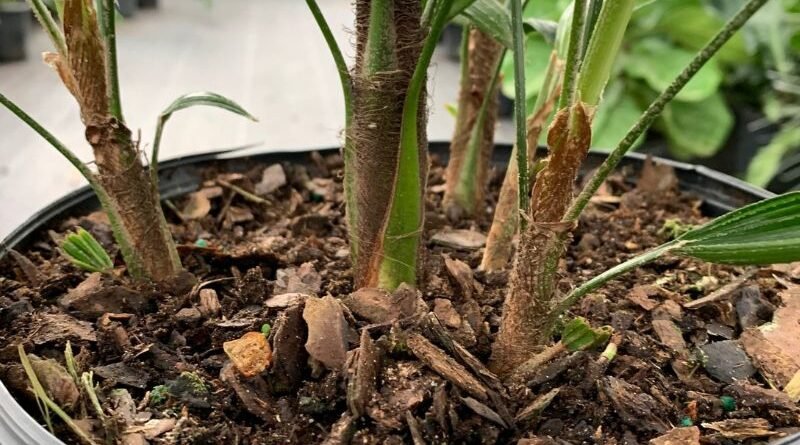How to Propagate Lady Palm
Lady Palm (Rhapis excelsa), with its graceful fronds and elegant appearance, is a popular choice among houseplant enthusiasts. Known for its air-purifying properties and low maintenance requirements, it’s a fantastic addition to any indoor garden. While buying a mature Lady Palm is a common choice, propagating this plant is a rewarding experience for those who wish to grow their own or share with fellow plant lovers.How to Propagate Lady Palm
In this article, I will share my extensive experience and knowledge on propagating Lady Palm. You’ll learn about the propagation basics, detailed propagation methods, and the pros and cons of each method. So, let’s dive into the fascinating world of Lady Palm propagation!
Lady Palm Propagation Basics
Before we delve into the specific propagation methods, it’s essential to understand the basics. Here’s a quick overview of various propagation methods for Lady Palm:
| Method | Time for Propagation | Working Time | Total Time | Difficulty Level | Materials Required |
|---|---|---|---|---|---|
| Offsets/Division | Spring or early summer | 20-30 minutes | 2-3 months | Easy | Pruning shears, pot, well-draining soil |
| Seeds | Spring | 20-30 minutes | 6-12 months | Moderate | Fresh seeds, pot, seed-starting mix |
| Rhizome Cuttings | Spring or early summer | 20-30 minutes | 4-6 months | Moderate | Pruning shears, pot, well-draining soil, rooting hormone |
| Pups/Suckers | Spring or early summer | 20-30 minutes | 2-3 months | Easy | Pruning shears, pot, well-draining soil |
Now that we have a broad understanding of the propagation methods, let’s explore each method in detail.
Propagation Methods
1. Offsets/Division
Step-by-Step Instructions:
- Select a mature Lady Palm plant.
- Carefully remove the plant from its pot and shake off excess soil.
- Look for offsets or new shoots with their roots attached.
- Gently separate these offsets from the parent plant using your hands or a pair of pruning shears.
- Plant each offset in a separate pot with well-draining soil.
- Water the newly potted offsets thoroughly and place them in a location with bright, indirect light.
Pros:
- Easy and reliable method.
- Offsets develop into mature plants relatively quickly.
Cons:
- May not yield as many new plants as other methods.
2. Seeds
Step-by-Step Instructions:
- Obtain fresh Lady Palm seeds from a reputable source.
- Fill a pot with a seed-starting mix and plant the seeds just below the surface.
- Water the soil evenly to ensure moisture but avoid overwatering.
- Cover the pot with plastic wrap or a transparent lid to create a mini-greenhouse effect.
- Place the pot in a warm and bright location.
- Once seedlings are large enough, transplant them into individual pots with well-draining soil.
Pros:
- You can propagate a large number of plants from seeds.
- Offers a chance to select and grow unique Lady Palm varieties.
Cons:
- Longer propagation time compared to other methods.
3. Rhizome Cuttings
Step-by-Step Instructions:
- In the spring or early summer, select a mature Lady Palm plant.
- Carefully remove the plant from its pot and identify healthy rhizomes.
- Use pruning shears to cut a rhizome section with at least one node.
- Dust the cut end with rooting hormone.
- Plant the rhizome section in a pot with well-draining soil.
- Water it thoroughly and place in a warm, bright location.
Pros:
- Relatively fast propagation method.
- Produces strong, well-established plants.
Cons:
- Slightly more complex than other methods.
- Not all rhizome sections may successfully root.
4. Pups/Suckers
Step-by-Step Instructions:
- In the spring or early summer, identify young shoots or pups emerging from the base of the plant.
- Use pruning shears to separate these pups from the parent plant.
- Plant each pup in a separate pot with well-draining soil.
- Water them thoroughly and provide bright, indirect light.
Pros:
- A straightforward method, especially for beginners.
- Pups grow quickly and develop into mature plants.
Cons:
- Limited to the number of pups the parent plant produces.
In conclusion, propagating Lady Palm is an enjoyable and fulfilling experience for any plant enthusiast. Each method has its advantages and disadvantages, allowing you to choose the one that best suits your skills and preferences. Whether you opt for offsets, seeds, rhizome cuttings, or pups, with proper care and patience, you can successfully propagate your own beautiful Lady Palms.
